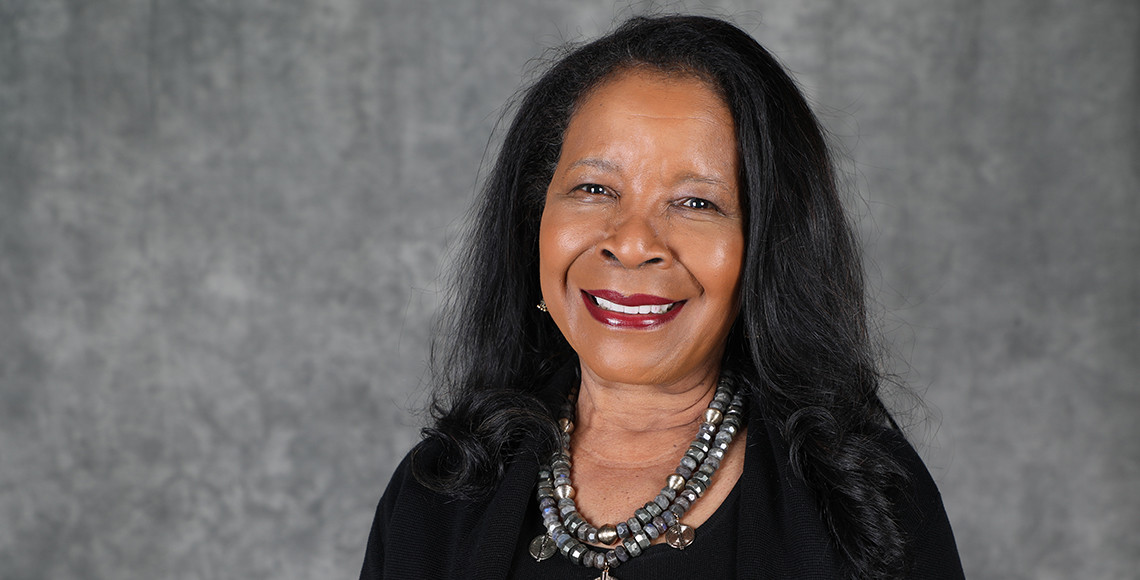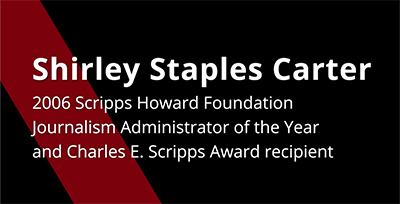Shirley Staples Carter, Ph.D., has been a pillar of the CIC community since she started as the director of the School of Journalism and Mass Communications in 2003.
As the first director of the SJMC after the creation of the college, Carter helped the school build a new community alongside their colleagues in the School of Information Science. She also had the privilege of experiencing the joy of faculty and students alike when the school moved into its new home at 800 Sumter Street.
Through all of the vicissitudes, Carter maintained a singular focus on providing a learning environment that would enable every student to thrive. Her mark on the School of Journalism and Mass Communications is indelible. Here are a few reflections she shared as her time in the school comes to a close.
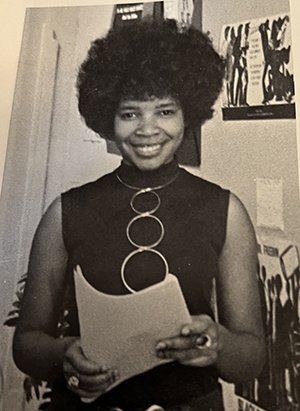
You were an English major in college. Was there a specific incident in your life which
sparked your interest in journalism, PR and mass communication?
Yes, I wrote poetry as a sophomore and junior in college, and was featured in an anthology,
“We Speak as Liberators, Young Black Poets.” I also clandestinely slipped my poetry
under the doors of the student newspaper, The Campus Digest, which were published,
but I was too shy to identify myself. One day, I summoned the courage to walk in and
introduce myself as the mysterious poet. The editor hired me as a regular contributor
(unpaid), and a year later, associate editor and as a senior, editor-in-chief. I was
smitten as I realized the power of the published word and I knew then that I wanted
to pursue a career in journalism which led me to Ohio State to pursue my master’s
in journalism. My research professor was a young and brilliant Dr. Erik Collins. It was great to see him when I interviewed for the director’s position, and I wondered
if he remembered the one of two very shy students in his class. He remembered me.
You joined the SJMC as the first director of the school after the merger with the
iSchool and creation of the college. What was your biggest challenge during that time
of change?
I had previously served as chair of a newly merged department and was prepared to
some degree for some challenges, but obviously this was different — a flagship university
and the merger of two previous colleges as two “schools” comprising a new college.
The major challenges were low faculty morale, the fragile infrastructure of the Carolina
Coliseum where the new college was initially housed, school enrollment pressures,
an unusually high student to faculty ratio in public relations, for example, and other
issues that posed threats to the reaccreditation process.
When you first arrived, three students interviewed you and asked what your plan was to help the J-school grow and compete nationally. You responded: "I need to work very closely with the faculty and administration to ensure that the school has the resources to move forward. We need to develop strategies for managing enrollment, raising our research profile, and achieving re-accreditation next year. Our strategic plan should include identifying best practices among the top 10 journalism and mass communication programs in the country, then developing our own plan for moving to the top five in the country." Do you think you were successful in achieving this?
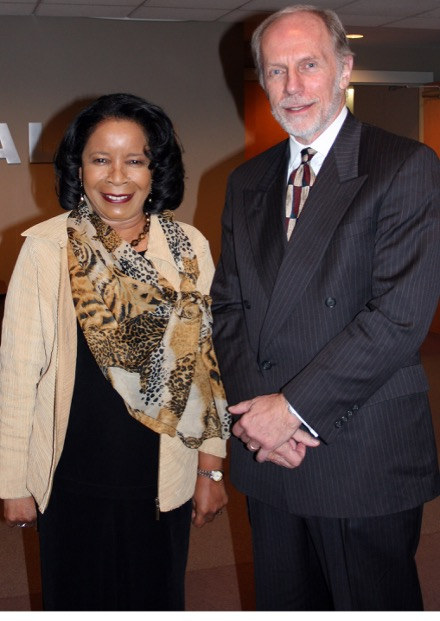
Working with unit faculty and the dean, I led the SJMC to reaccreditation two years after the merger, and that was a big deal in that although we were tweaked for some weaknesses, we were found in compliance on all standards. We were able to achieve the other goals as noted, and most of all, lay a strong foundation for the unit’s future growth.
We were successful in developing and implementing a recruitment and retention plan to identify, attract, recruit and retain highly qualified individuals to join the existing strong faculty and maintain the school’s reputation for excellence in teaching, research and service. We received a $300,000 grant from USC Research to create a joint venture between the two schools and the School of Public Health, which laid the groundwork for our current Health, Science, Information and Communications Bridge to Faculty initiative. We added the highly successful major in visual communications and created the joint MA and JD program with the School of Law. We also added an international program emphasis and appointed a coordinator to oversee study abroad programs, and develop new international opportunities for faculty and students, initially in Italy, Ireland, Australia, Germany, China, Spain and South Africa.
We developed an enrollment management program and hired outstanding faculty in all sequences/majors. Students received top awards in major national competitions such as the Hearst Writing Competition Awards and Bateman Team competition, and faculty were honored with awards for teaching and research excellence. Staff growth and professional development included the hiring of our first career services manager to optimize student success. During the first five years we launched The Carolina Agency, a full-service, student-run, PRSSA-approved advertising and public relations agency. We also strengthened industry and professional ties, raised faculty and staff morale with the implementation of annual salary bonuses and professional development support.
In 2007, the South Carolina legislature passed Bill 3945 acknowledging your professional contributions writing “Whereas, celebrating an almost thirty-year career in journalism education, Dr. Shirley Staples Carter, one of only a few African American women to rise to the highest levels of journalism education in the country, is an outstanding asset to the University of South Carolina.”
You've led a lot of first-to-do-it lists. Do you think the makeup of the profession
has changed?
One might say that I am a trailblazer or pioneer in that I have been the “first”
in all my academic and administrative appointments. In others, maybe one of the first,
as the second woman/person of color to receive a Ph.D. in Journalism from the University
of Missouri. The only person of color to date and first woman to receive the Journalism
Administrator of the Year award, the first person of color to serve as president of
the ASJMC, director at the Elliott School of Communication and SJMC, and the other
administrative roles as department chair. But most of all, I am grateful to have the
opportunity to serve and pursue my passions.
The profession has changed as more women and others less-well represented have assumed leadership roles in journalism and higher education. When I served as president of ASJMC, my counterpart as president of AEJMC joined me and others to create a pathway initiative for future leaders. A similar program continues to date.
You've received a great many other accolades through the years. What are some of the
honors you most cherish?
My greatest achievement is being selected by a panel of judges including media professionals,
journalism and mass communication administrators and foundation representatives as
the 2006 Scripps Howard Foundation Journalism Administrator of the Year and Charles
E. Scripps Award recipient, presented in partnership with the Association for Education
in Journalism and Mass Communication. As part of the honor, the school also received
a $5000 prize earmarked for program development. On a personal note, my only grandchild
was also born during my tenure as director.
In addition to the journalism administrator of the year award, I also received the coveted Mortar Board Excellence in Teaching award after my term as director was completed and I returned to teaching full-time. It meant a lot because I was nominated by my students.
I have served as a professor and administrator at seven distinct universities during a 50-year period. I am grateful and most appreciative.
Any regrets or anything looking back on your time here that you wish you had done
differently, not done or did more of?
Perhaps more effectively balancing administration, teaching, research and spending
more time with my family. But I am grateful that I have been used by life to the extent
that life has used me.
Favorite memory at the J-school?
Hands down, moving into our current building. On the first day I strolled the hallways
and was always met by colleagues with broad smiles.
Also, the people whose lives I have touched as a director, professor and associate dean, and those who have impacted mine as deans, faculty and staff colleagues, and the amazing students during the past 22 years.
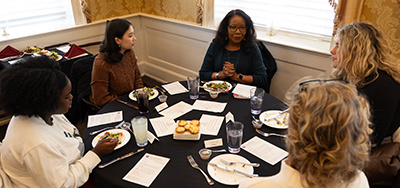
What impact do you hope to have had on your students and the field of journalism?
I think I have demonstrated the power of “we” in that there is a place for all of
us, and given the opportunity, we can achieve greatness and make the world a better
place for all. What better way to accomplish that than by passionate and compassionate
service?
What advice would you give to new journalism professors or those considering a career
in academia?
Be undeniable. And to achieve that, you must be prepared and never provide anyone
a valid reason to say no — have what it takes to achieve your goals. Someone once
told me that if I wanted to pursue a career in academia, I needed to pursue a doctorate.
I would also advise those aspiring to the professoriate to hone teaching and research skills and take advantage of professional development programs for that purpose. Seek mentors, coaches and sponsors. Be active in professional associations related to your career goals and be visible. Have a sense of presence so that when you enter a room, you are recognized in a positive way. Be authentic, recognize your uniqueness and cultivate your gifts. Be persistent.
But most of all, be kind, thoughtful and considerate of others. I experienced disappointments, the pain of denials for reasons beyond my control, but I remembered to maintain perspective, and that as the old saying goes, a setback may be the setup for a comeback.
If you could go back and speak to your 18-year-old self, would you still choose this
career path? Why or why not?
At age 18, I was a junior in college and about to become editor-in-chief of the student
newspaper. Yep, I was ready to continue my pursuit of a career in journalism. By the
articles we chose, the truths we published, we recognized the power of journalism,
ethics, fairness and free speech.
What’s next for you?
I plan to spend more time with my family, finish the book I started during my one
and only sabbatical 18 years ago, and beyond that, remain open and receptive to what’s
next.
